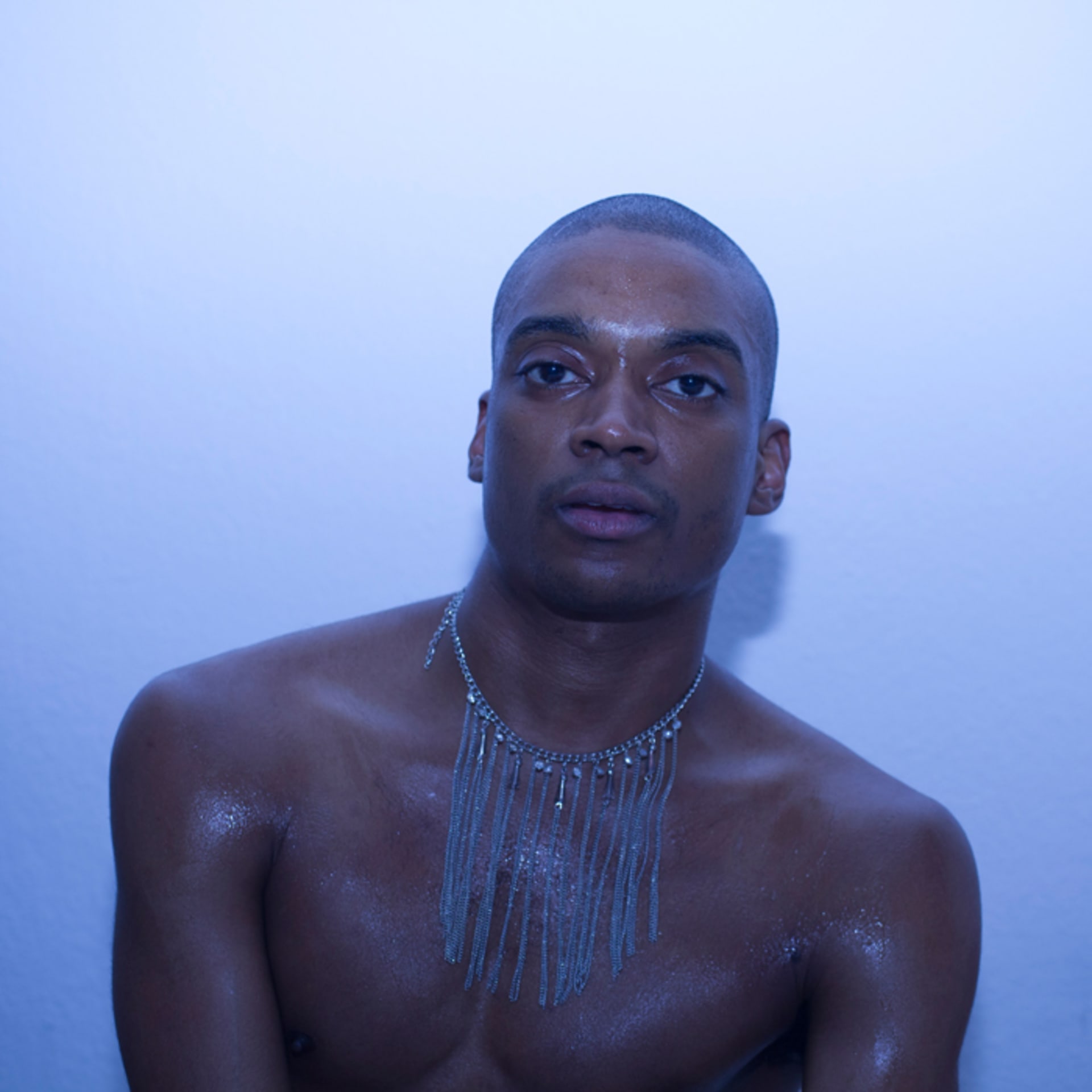
Lotic Explains His “Ugly” Take On R&B
Big-time artists like Kanye West and Björk have taken a serious interest in R&B experimentalists like Lotic and his peers, so we sent EB contributor Russell Dean Stone to catch up with the Tri Angle signee to get an insider’s take on the success.
It feels wrong to meet Lotic in the daytime, since his music deals in darkness and shadows. As we take seats in the sunshine in front of a café that advertises fresh food and bio coffee, the symbiosis between the hedonistic nocturnal existence and the diurnal good life seems to mirror the Texas native’s proclivity for transforming mainstream R&B hits into unsettling alien beats.
In 2014, he received critical acclaim for his DAMSEL in DISTRESS mixtape, especially the much-hyped version of Beyonce’s “Drunk In Love” that transformed her boisterous ode to amour into something unnerving and downright nasty. We at Electronic Beats were among those wooed by his take on Bey, and recruited him to recommend her self-titled album for an issue of our print magazine last winter.
A few weeks ago he incited another net-based frenzy when he revealed “Heterocetera,” the title track from his forthcoming debut EP on Tri Angle Records. In its wake, heavyweight publications Pitchfork and Resident Advisor have unveiled features hailing him as a rising star. We’ve been excited about his potential since 2012, when we caught his set at a Noisekölln/Weird Terrain party in Berlin, and in 2013, we tapped him for a contribution to our EB radio mix series. Then a few months later Lisa Blanning conducted a conversation between Lotic and Rabit for EB.net after the release of his Fallout EP. Nevertheless, we’re certainly not immune to getting worked up about Lotic once again. This time, what excites us is that he’s one promising talent in a community of futuristic R&B producers who have snagged attention in the mainstream as well as the underground, thanks to megastars like Kanye West and Björk.
These days, Lotic lives in Berlin, where his creative efforts are flourishing in the city’s fecund artistic environment. The word “lotic” itself refers to ecosystems within moving bodies of water, so we start the conversation by framing Berlin as a natural habitat that nourishes his output.
“‘Ecosystem’ is a good word for Berlin,” Lotic says in a rapid Texan accent. “It’s a better word than ‘scene.’ I was worried when I got here because it didn’t seem like there was a place for an experimental take on pop music that’s rooted in the club. I didn’t know there were kids here who had noticed that already and were thinking about solving that problem.”
Some of those problem-solvers are Lotic’s fellow members in the Janus Crew, a collective of forward-thinking DJs and producers that work in many fields besides futuristic R&B, like recent EB interviewee TCF and Played Out columnist KABLAM. Others tackling the “problem” are his labelmates on Tri Angle like Haxan Cloak, oOoOO, Clams Casino and Evian Christ and non-Tri Angle artists like Arca, Suicideyear, and Houndstooth duo 18+ (another subject of a recent EB interview). These artists champion a style that recontextualizes conventional R&B aesthetics and processes them through twisted filters.
“I was interested in really fucking up pop music, making it ugly,” Lotic declares. “I wanted to be respectful of the original content but rude to the audience. My EP is a cleaned up, nicer version of that, I’m getting better at figuring out how to give everything room.”
The five-track record is an abominable ballet of twisted samples: slow-motion car crashes, screams from spacecrafts stranded in faraway galaxies, aliens tearing through human flesh. This is Lotic flexing, and Heterocetera is his finely developed Xenomorph, hatched and ready to impregnate your mind, body, and soul.
“I’ve always been attracted to ugly sounds,” he says. “I don’t care if the MP3 is low quality. Playing in Berlin on really expensive sound systems to crowds that are just stroking their chins half the time and wanting everything to be so perfect—the obvious rejection of that is to make everything ugly and hard to follow. It took a while to do it in a way that makes sense. It was a reaction to this desire for things to be perfect, pristine and really boring with no life.”
This so-called “ugly” take on R&B has a familiar backstory: young artists internalize the tenets of styles that were commercially successful when they were children—in this case, Rodney “Darkchild” Jerkins and Timbaland-era R&B—and dismantle them, push the conventions, and create their own take on the sound. And as aforementioned, the most interesting part about this subphylum of R&B isn’t focused on one particular artist, but the fact that mainstream musicians have taken a serious interest in the whole collection. While seapunk enjoyed a brief bout of attention from Rihanna, Lady Gaga, and Azealia Banks, its appropriation extended only to the visual realm. However, Lotic’s peers in the universe of mangled R&B have been tapped by several heavyweight artists for full albums: indie pop star FKA Twigs enlisted Arca to produce her debut LP, Kanye tapped him to work on Yeezus, and, of course, Bjork plucked Arca and Tri Angle artist Haxan Cloak to work on Vulnicura.
As for Lotic, he seems surprised that anyone listens to his work. “I always felt I would have no audience ever,” he says. “I thought I was making music people didn’t want to hear. I’m really hard on myself. If each new thing that I’m doing isn’t a little more challenging for me to make then I have failed.”
This article was written by Russell Dean Stone.
Published February 26, 2015. Words by EB Team.
